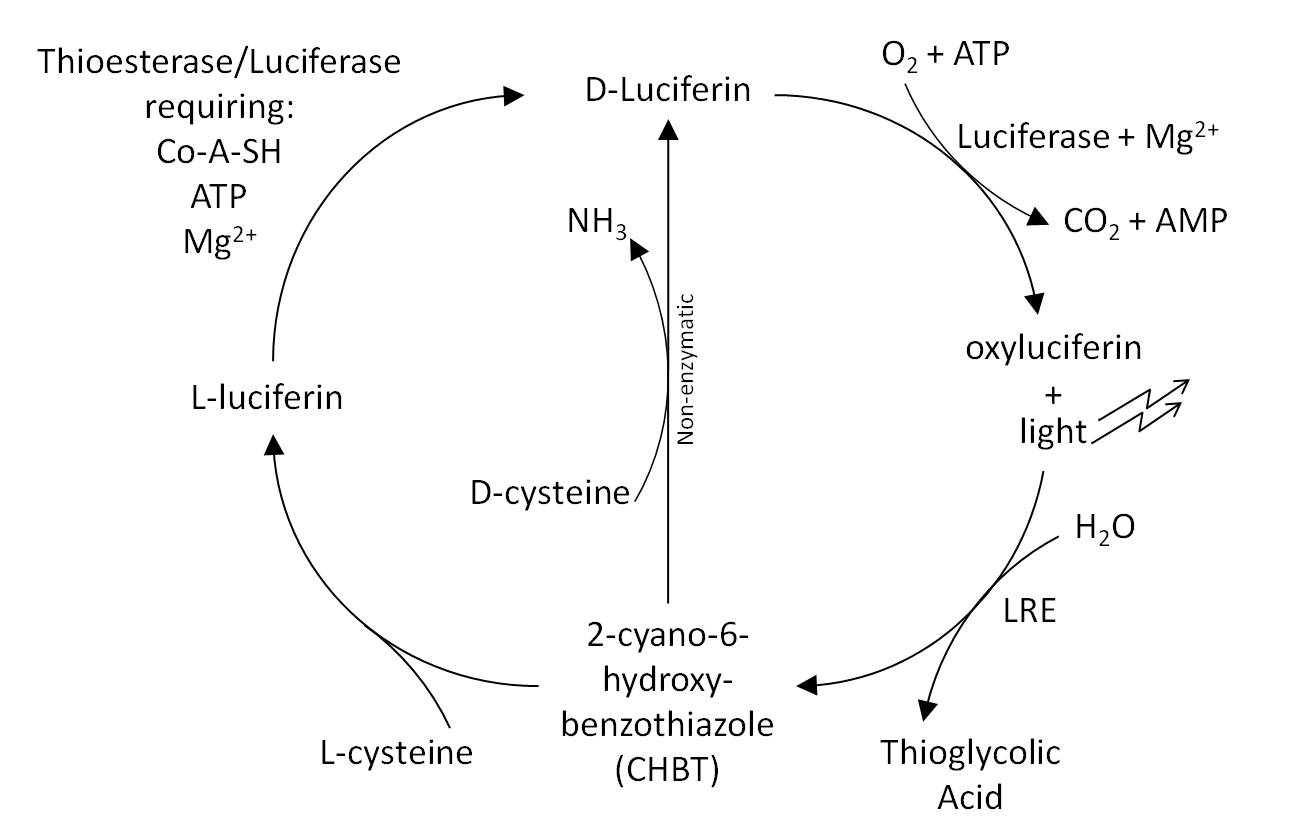Team:Cambridge/Bioluminescence/Background Firefly
From 2010.igem.org
(Difference between revisions)
| Line 2: | Line 2: | ||
{{:Team:Cambridge/Templates/headerbar|colour=#96d446|linkcolour=#557A25|title=Project Firefly: Background}} | {{:Team:Cambridge/Templates/headerbar|colour=#96d446|linkcolour=#557A25|title=Project Firefly: Background}} | ||
{{:Team:Cambridge/Templates/Topheader|header=The luciferin cycle}} | {{:Team:Cambridge/Templates/Topheader|header=The luciferin cycle}} | ||
| - | + | The design of our BioBricks was based on an understanding of the bioluminescence reactions as displayed in the diagram below. D-luciferin is converted into oxyluciferin by the enzyme luciferase using ATP and oxygen as well as Magnesium as a co-factor. Oxyluciferin is generated in an unstable, energetically excited state, but rapidly returns to the more stable ground state. This is lower in energy and the energy released during the process takes the form of an emitted photon of visible light. The generation of light in this reaction is extremely efficient as almost all the energy put into the system is converted into light, with hardly any loss to heat production. The luciferin-regenerating enzyme (LRE) then converts oxyluciferin into 2-cyano-6-hydroxybenzothiazole (CHBT), which is non-enzymatically converted back into D-luciferin using D-cysteine. An alternative route has been reported in which D-luciferin is regenerated via L-luciferin. This pathway requires L-cysteine and invovles the enzymes thioesterase and luciferase together with Coenzyme A, Magnesium and ATP. | |
[[Image:Cam-luci-cycle.jpg|center|500px]] | [[Image:Cam-luci-cycle.jpg|center|500px]] | ||
Revision as of 21:04, 24 October 2010

Project Firefly: Background
 "
"
